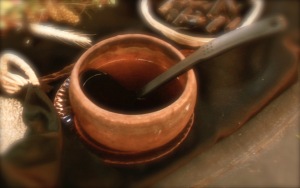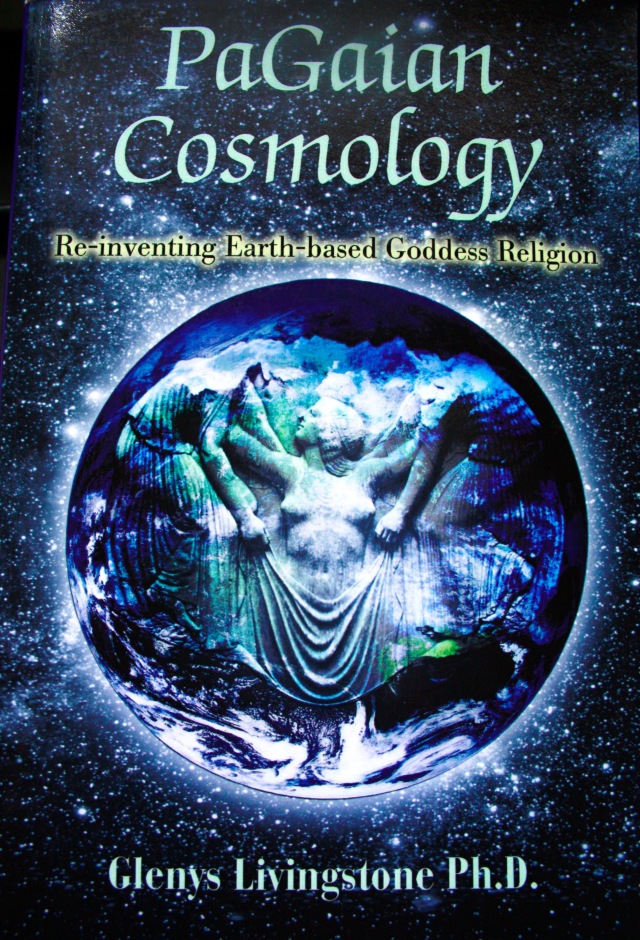 In the Southern Hemisphere, it is the Season of the waxing dark … we are transitioning to the cross-quarter moment between Summer Solstice and Autumn Equinox: it is the time to celebrate and nurture the new dark, and our native allurement to the Dark whence we come and to whom we return. At my place in the Lammas ceremonial statement of purpose, it is said: “the seed of darkness born at the Summer Solstice now grows.”
In the Southern Hemisphere, it is the Season of the waxing dark … we are transitioning to the cross-quarter moment between Summer Solstice and Autumn Equinox: it is the time to celebrate and nurture the new dark, and our native allurement to the Dark whence we come and to whom we return. At my place in the Lammas ceremonial statement of purpose, it is said: “the seed of darkness born at the Summer Solstice now grows.”
The dedication made in the ceremony by each participant goes like this … these words are offered, and are a guide for how each may choose to express the connection of this Seasonal Moment:
I dedicate my small self to Larger Deeper Self, understanding that I am She – GaiaUniverse – She Who is All. I am the beauty of the Dark: the Sentience of the Cosmos is within me, and I am in Her. I trust Her Wisdom and Creativity – She Who receives me in every moment, dissolves me in very moment, so that new composition may arise. I offer Her Darkness … for transformation. I have … for-giving. I want to make sacred … (the blanks are for each to fill in as they wish)
This Lammas dedication mirrors that made at Imbolc/Early Spring, directly across the Wheel of the Year, and the co-incidental transition in the Northern Hemisphere at this time. The Imbolc dedication made by each participant in the ceremony may go like this … these words are a guide for what is intended:
I commit myself to my particular small self, understanding that I am She – Gaia – She who is All. I am connected to Her as the tree bud is to the branch. ‘I am the beauty of the green earth and the white moon among the stars and the mystery of the waters’. I commit myself to this Originating Power present in me, the Sacred Flame in me. I will protect Her and honour Her in myself – this particular Beauty, who is ever-new. I am a Promise of Life. Whatever She needs I will give Her. I will tend Her in myself – so that She may grow strong and flourish.
Whereas at Imbolc, we shine forth as individual, multiforms of Her; at Lammas, we small individual selves remember that we are She (in case we had forgotten), and dissolve back into Her. We are the Promise of Life as we affirmed at Imbolc, but we are the Promise of Her – it is not ours to hold. We become the Harvest at Lammas; our individual harvest is Her Harvest. We are the process itself, the Food for enriching the whole: the sacrifice. Though that word may be problematic in the current dominating mythological millieu, its meaning is to “make whole”, and speaks of a deep truth of the nature of existence – we are Gaia’s Creative Process. It is a surrender – to Her, of our fullness of being. At Imbolc, we may make the dedication to become that fullness, to nurture it; at Lammas we remember whence it comes, its sentient source. These two Seasonal Moments across the Wheel from each other, and actually occurring at the same time, are a unity; and with practice of celebrating the whole Seasonal Wheel, over time, one may come to learn this unity … She will teach.

Chamunda. Ref: Adele Getty “Goddess”, p.85
Here is an image of Chamunda, from India (1000 C.E.)[1] for consideration: Chamunda has been praised with:
only terrifying to those who oppose Her, for Her devotees She is a powerful vigilant guardian. … Chamunda belongs to the group of ‘matrikas’ – the powerful Mothers who ensure universal order.[2]
This is resonant with the most recent findings about chaos in complexity science – where at deepest level, order and chaos cannot be separated. This “Dark One” is about re-storing order … She is not about some malevolent motive as patriarchal religions are wont to project, and as patriarchal cosmologies indeed require: that is, classical theism assumes that the loss of the perfect world is always due to moral failing and/or must be blamed on some opposing mythological entity, whereas a menstrual cosmology is one “in which chaos and harmony belong together in a creation where perfection is both impossible and meaningless.”[3]
 The cauldron metaphor, which is so much part of Lammas ceremonial Poetry as I express it in PaGaian Cosmology, represents the Cosmogonic Womb[4] in which we are immersed, the Larger Self, the Recipe/Feast of which we are part. The cauldron represents the Space from which new composition arises.[5]
The cauldron metaphor, which is so much part of Lammas ceremonial Poetry as I express it in PaGaian Cosmology, represents the Cosmogonic Womb[4] in which we are immersed, the Larger Self, the Recipe/Feast of which we are part. The cauldron represents the Space from which new composition arises.[5]

It is the new composition that is to be nurtured in the Early Spring, a new beauty that may grow strong, rooted in the compost of what has been.
© Glenys Livingstone 2018
For a Lammas or an Imbolc meditation: PaGaian Cosmology Meditations (scroll down to the individual tracks).
NOTES:
[1] From Adele Getty, Goddess: Mother of Living Nature, p.85.
[2] These words were used to describe Her when She was part of the Goddess: Divine Energy exhibition at the Art Gallery of New South Wales in 2006-2007.
[3] Melissa Raphael, Thealogy and Embodiment, p. 270.
[4] A term used by Melissa Raphael, Thealogy and Embodiment, chapter 7.
[5] I capitalize the words in these sentences to signify the ultimate nature that I intend to qualify these terms with: to name them as sacred realities – much as any holy day or motif is signified with a capital.
REFERENCES:
Getty, Adele. Goddess: Mother of Living Nature. London: Thames and Hudson, 1990.
Livingstone, Glenys. PaGaian Cosmology: Re-inventing Earth-based Goddess Religion. NE: iUniverse, 2005.
Raphael, Melissa. Thealogy and Embodiment: the Post-Patriarchal Reconstruction of Female Sexuality. Sheffield: Sheffield Press, 1996.




